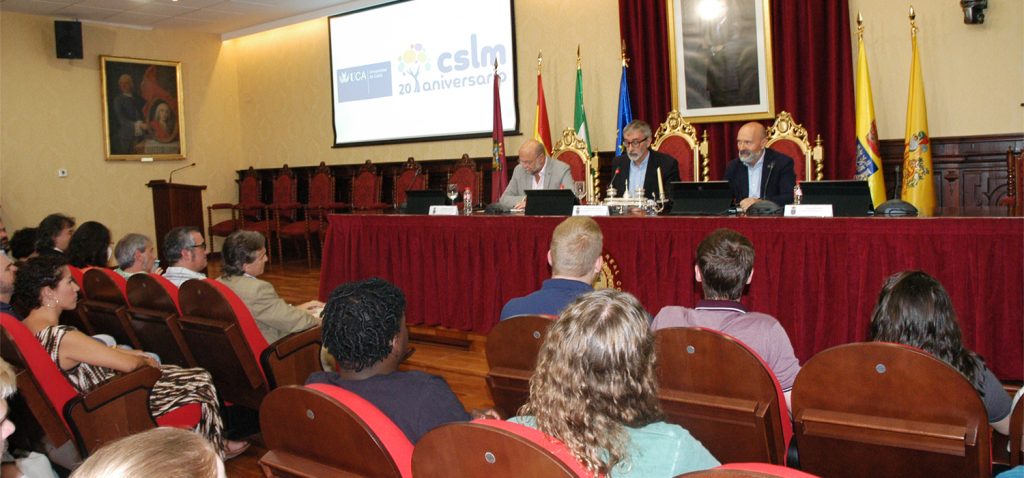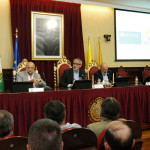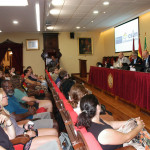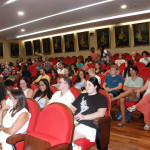The Rector of the University of Cadiz, Francisco Piniella, presided today, together with the Vice Rector for Internationalisation, Rafael Jiménez Castañeda, and the Director General for Language Policy, Francisco Javier de Cos, at the commemorative ceremony marking the 20th anniversary of the creation of the Centro Superior de Lenguas Modernas (CSLM) in the Faculty of Medicine. Nearly 50,000 students from around 70 countries from all over Europe, the United States, North Africa and the post-Soviet area, mainly, have passed through its classrooms since it began its activity at the UCA in 2002.
The CSLM is a unit of the University of Cadiz responsible for language training and language level accreditation, which offers its services on the different campuses and online to both the university community and its social environment.
Francisco Piniella congratulated both the teaching and administrative staff and all those responsible and the government teams who over these two decades have given continuity to “a strategic policy to strengthen and improve language skills”, for being ambassadors of the University of Cadiz throughout these years, making the institution more international from “doors open to mobility” and the socio-cultural learning that it entails: “you are a reference in language training, and not only in the city of Cadiz. You provide an essential service in a globalised and constantly mobile society to our university community and to society as a whole. A service that takes the form of a complete programme of courses at different levels and in nine languages: Moroccan Arabic, German, French, English, Italian, Portuguese, Russian (together with CUNEAC), Spanish sign language and Spanish for foreigners”. The Rector of the UCA explained that it is a centre “where hundreds of students from countries on five continents are trained every year to improve their fluency and mastery of Spanish. Among them, the 1,500 Erasmus students who choose the UCA each year as their destination university to complete their university studies”.
For his part, Rafael Jiménez Castañeda recalled that the Centro Superior de Lenguas Modernas and its staff “play a leading role in the internationalisation of its offer of Spanish for foreigners”, which is why multilingualism “opens us up to new challenges”, such as increasing the offer of new Asian and Slavic languages through agreements with universities in these countries, as in the case of Japan. He again thanked all the staff for their commitment and involvement.
Francisco de Cos gave a brief historical review of these years and the people who have participated in its growth and strengthening: “it was inaugurated on 22 March 2002 to provide the university community with a service to obtain knowledge of other languages and the PDI for the translation of their research”. He had words of recognition for Paco Zayas, Antonio García, Margarita Castilla, Arkaitz Errazkin, Antonio Rafael Peña and Andrés Santana, although he also mentioned the entire team: “if the CSLM is what it is today, it is due to all the people who have worked and continue to work for it”. The Director shared as an opportunity the effort that has been made in these last years of pandemic to adapt to the circumstances and to be able to give classes in the virtual space; obtaining very good results, according to the opinion polls received; and, of the weaknesses and pending issues, he pointed out that “a fixed and definitive site must be sought for the Centre so as not to depend on the faculties and other spaces, and a solution is being sought”. Finally, he dedicated a few words to the war in Ukraine, which the UCA is experiencing very closely, as “it is a threat to the teaching of some of the languages taught; but we provide the language services demanded by the different interest groups”.
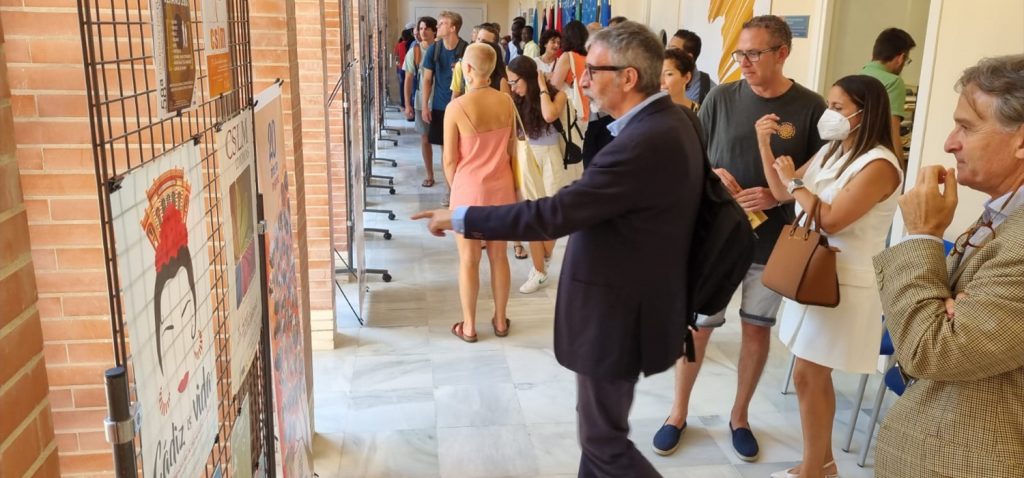
The event was attended by the vice-rectors of Internationalisation of the universities of Huelva and La Laguna and the vice-rector of Las Palmas de Gran Canaria, teaching and management staff, as well as a large group of international students of the CSLM. At the end, the authorities, accompanied by the students, inaugurated a photographic exhibition of these first 20 years of activity in the courtyard of the Hospital Real building. Two decades in images


